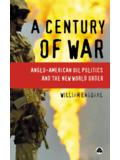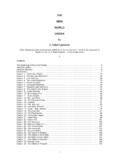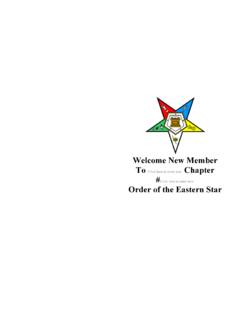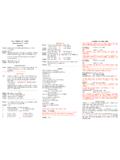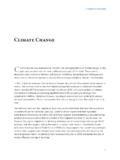Transcription of Spanish Treasure Bars From New World …
1 Spanish Treasure bars From New World Shipwrecks, Volume One: by Alan K. Craig & Ernest J. Richards, Jr. 213 + x pages, profusely illustrated, 12 chapters, 2. catalogs, 2 appendices, glossary, bibliography, addendum and index. Paper cover, 8-1/2. inches x 11 inches, text in English. Published in 2003 by En Rada Publications, Box 1698, West Palm Beach, Florida, 33402-1698. 2003. [ISBN 0-9744705-0-3]. Available from publisher at $45 plus $ shipping to a US address, others contact publisher for shipping: Write address above or telephone 561-965-2930, or email Released in October 2003, this long awaited book addresses a void in the numismatic literature of Spanish America.
2 The interest in Spanish Treasure bars increases every year and with every new shipwreck salvaged. Dr. Craig, is the author of Spanish Colonial Silver Coins In The Florida Collection and Spanish Colonial Gold Coins in the Florida Collection. Ernie Richards, author of many articles on Treasure hunting and publisher of the news letter Plus Ultra have teamed up to assemble this new work. The authors have pulled together data from various shipwrecks and applied research and analysis to open up the World of Treasure bars to the reader. While admitting that there is much information not included and the insightful projection that much new information will come forward now that there is a work on subject, we notice in the title the words volume one.
3 We hope the series continues. We present here a review of the book, chapter by chapter. Chapter 1, Introduction: 18 pp., 6 figures and 2 tables. Fundamental background information on royal taxation, royal treasuries, foundries, metal processing and the function of silver and gold bars in 16th to 18th century Americas. Figures showing locations of royal cajas (treasuries) in Nueva Granada (Colombia) and Per . A tax table of Potos silver bars showing quantity of bars taxed for many of the years between 1572. and 1700. The introduction concludes with 7 interesting pages of excerpts of mint records from the Archivos de la Naci n Boliviana.
4 Chapter 2, The Mimbres bars : 34 pp., 12 figures and 2 tables. This chapter deals with the Tumbaga bars that were salvaged in the early 1990's. While the names tumbaga, tepuzque and gua n are discussed, the authors propose the name mimbres for these bars . The oldest new World Spanish shipwreck Treasure so far discovered, the authors date the wreck 1527 or later, the name of the ship is as yet still unknown. Both the gold and silver bars are discussed, including small gold pieces stamped with marks which are possibly early coinage from Mexico before the mint was opened.
5 In this reviewer's opinion these Tumbaga or Mimbres bars are of the highest historical importance and we are pleased to see them presented in the book. Chapter 3, The Padre Island Wrecks: 4 pp. 8 figures and 1 table. Most of the figures are of the stamps found on recovered bars . The Padre Island wrecks of 1554 are important because of the archaeological records made and published. Chapter 4, A Shipwreck near Cayo In s de Soto: 8 pp., 8 figures and 1 table. Most of the new World Treasure was shipped to Cuba, Treasure fleets were assembled there for the trip back to Spain.
6 The authors compare the stamps of these Cuban shipwreck bars with those from the Padre Island Shipwrecks. Chapter 5, The Power Plant Wreck: 4 pp., 6 figures, and 1 table. Artifacts recovered from a power plant construction site on Hutchison Island, Fl. Including a remarkable silver disk with the letter G , assayer Juan Gutierrez (?) and a scallop shell for the symbol of the order of St. James, Santiago , situated in the Florenzada style cross typical of Mexican coinage starting with coins in the name of Philip II. Chapter 6, Treasure bars from the Atocha: 40 pp., 72 figures plus an additional 46 siglas (identification marks) assembled into a catalog of 10 sheets.
7 The chapter covers stamps, assay bites , how the Atocha silver bars were made and transported. A separate section discusses bars made at Oruro as well as Potos . Also covered are markings applied to gold bars attributed to foundries in Colombia. Another wreck, called the Deep Water Wreck is covered and identified with the 1622 fleet because of markings on gold ingots also attributed to Colombia. This chapter is packed with information on the most publicized shipwreck salvaged. At the end of the book is a 42-page appendix with 16. columns of tabulated data for 963 Atocha silver bars , a result of researching the original documents made at the time of salvage.
8 This appendix will be a tremendous asset to researchers. Chapter 7, Nuestra Se ora de las Maravillas: 8 pp., 8 figures plus an additional 34 siglas assembled into a catalog of 8 sheets. The Maravillas was carrying Treasure recovered from the shipwreck of La Capitana, which had sunk on the Pacific side of the Americas, as well as other Treasure , when it sunk off the coast of the Bahamas in 1656. Silver and gold bars are illustrated with particular attention to the markings on the gold bars and their apparent relationship with gold bars from the Atocha, which wrecked some 40 years earlier.
9 Situated between chapters 7 and 8 is a section of 18 color photos, showing bars and some of the people associated with research of the bars , including Douglas Armstrong who wrote a book on the Tumbaga bars . Chapter 8, The Jupiter Wreck: 6 pp: and 10 figures. So named the Jupiter Wreck because of its location at Jupiter Inlet, some suggest it may have been the San Miguel de Archangel. In addition to typical coins, the wreck has yielded Star of Lima coins, gold bars and a silver bar, which the authors present in detail, suggesting Santa F de Bogot . as the mint of origin.
10 Chapter 9, Treasure bars from the 1715 Plate Fleet: 10 pp., and 18 figures. Silver bars , silver wedges, clusters of small silver ingots, gold bars and copper bars are presented. Chapter 10, El Nuevo Constante n e Duke of York: 4 pp., 5 figures. The El Nuevo Constante sank in 1766 off the coast of Louisiana. Buried in mud the artifacts were well preserved because of the lack of oxygen which when present accelerates corrosion. The copper ingots recovered are said to be indistinguishable from those recovered from the Atocha, which sank nearly a century and a half earlier.
